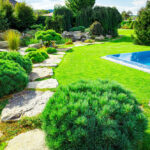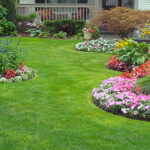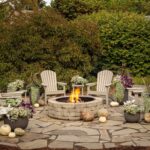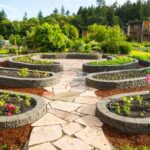Landscaping design is an important aspect of creating a visually appealing and functional outdoor space. It involves the arrangement of plants, trees, shrubs, flowers, and other elements to enhance the overall look and feel of a property. A well-designed landscape can greatly enhance the curb appeal of a home or commercial building, as well as provide a peaceful and inviting outdoor environment for relaxation and entertainment.
One of the key elements of landscaping design is selecting the right plants and trees for the space. This involves considering factors such as the climate, soil type, sun exposure, and maintenance requirements of each plant. By carefully choosing plants that are well-suited to the environment, a landscaper can create a thriving and sustainable landscape that requires minimal upkeep.
In addition to selecting the right plants, landscaping design also involves creating a harmonious layout that balances the various elements of the outdoor space. This may include organizing plants in a visually appealing manner, creating pathways and seating areas, and incorporating features such as fountains, ponds, or sculptures. By considering the overall layout of the space, a landscaper can create a cohesive and inviting outdoor environment that enhances the overall aesthetic of the property.
Another important aspect of landscaping design is selecting the right materials for hardscape elements such as patios, walkways, and retaining walls. These elements play a crucial role in defining the structure and flow of the outdoor space, as well as providing functional areas for relaxation and entertainment. By choosing materials that complement the overall design of the landscape, a landscaper can create a cohesive and visually striking outdoor environment that blends seamlessly with the natural surroundings.
In addition to aesthetics, landscaping design also takes into consideration practical considerations such as drainage, irrigation, and maintenance. Proper drainage is essential for preventing water damage and erosion, while efficient irrigation systems are necessary for keeping plants healthy and thriving. By incorporating these elements into the overall design, a landscaper can create a sustainable and low-maintenance landscape that will remain beautiful and functional for years to come.
Overall, landscaping design is a multifaceted process that involves careful planning, creativity, and attention to detail. By considering factors such as plant selection, layout, materials, and practical considerations, a landscaper can create a stunning and functional outdoor space that enhances the overall beauty and value of a property. Whether working on a residential garden or a commercial building, landscaping design plays a crucial role in creating a welcoming and harmonious outdoor environment for all to enjoy.
















